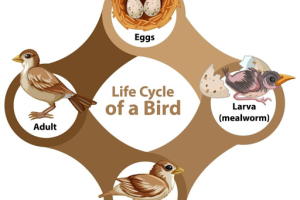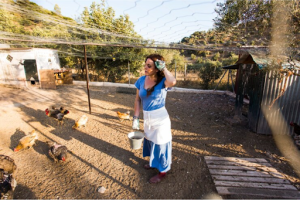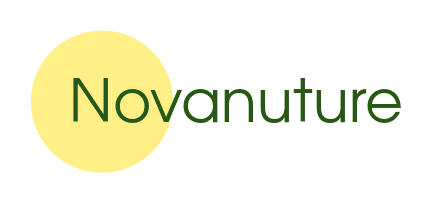Introduction
Codorniz, or quail, is a small but mighty bird known for its versatility in breeding, its adaptability to various habitats, and its role in delicious culinary dishes. For centuries, these birds have been cherished for their nutritional meat and eggs, making them a popular choice for farmers and chefs alike. Whether you’re interested in starting a sustainable quail farm, creating a healthy habitat for these birds, or discovering unique recipes to enjoy codorniz, this comprehensive guide has something for everyone. With proper care, quail are easy to raise, making them a great choice for beginners looking to explore poultry farming.
Learning about codorniz isn’t just practical—it’s fascinating too! Quails are known for their unique behavior and ability to adapt to both wild and controlled environments. Long-tail keywords like “how to breed codorniz for beginners” and “quail farming tips for sustainable living” highlight how these birds contribute to eco-friendly farming practices. Plus, their culinary uses, from grilled quail to quail egg appetizers, bring a gourmet touch to any meal. This guide is here to help you understand the wonders of codorniz, from their breeding needs to their habitat preferences and delicious uses in the kitchen. Let’s dive in and explore the world of codorniz together!
Understanding Codorniz: A Closer Look at Quail
Codorniz, also known as quail, are small birds famous for their adaptability and usefulness in farming and cooking. These birds are part of the pheasant family and are found in many parts of the world, thriving in both wild and controlled environments. Known for their fast growth and ability to lay plenty of eggs, quails are a favorite among beginner farmers looking for an easy and sustainable poultry option.
Quails are unique because they require less space and food compared to larger poultry, making them a practical choice for eco-friendly farming. Long-tail keywords like “quail life cycle explained” and “how to care for codorniz in small spaces” are perfect for learning about these birds. Besides their farming benefits, quails are also prized for their lean meat and nutrient-rich eggs. Whether in the wild or your backyard, codorniz are truly remarkable birds worth exploring!
Breeding Codorniz: Step-by-Step Guide

Breeding codorniz, or quail, is a rewarding process that’s easy to start with the right setup. First, it’s important to choose healthy birds. Select quails that are active, have smooth feathers, and come from a reliable breeder. A proper quail cage or pen with enough space, ventilation, and protection from predators is essential for their safety. Quails thrive best in clean and comfortable environments with nesting boxes where they can lay their eggs.
Feeding is another key step in successful breeding. Long-tail keywords like “best feed for quail breeding” and “how to care for codorniz eggs” highlight the importance of giving them a high-protein diet to support their health and egg production. Keep a close eye on their behavior to spot any signs of illness or stress, as these can affect breeding success. By following these steps, even beginners can raise happy and healthy codorniz!
Habitat and Natural Behavior of Codorniz
Codorniz, or quail, are small birds known for their adaptability to various environments. In the wild, quails prefer open grasslands, shrubs, and wooded areas where they can hide from predators and forage for seeds, insects, and small plants. Their natural behavior includes quick movements, ground-nesting, and forming small flocks. To replicate this habitat in a controlled environment, it’s important to provide a clean, safe space with plenty of room for them to roam and nest.
For domesticated codorniz, a well-designed pen with proper ventilation, soft bedding, and shaded areas creates a comfortable living space. Long-tail keywords like “how to set up a codorniz habitat at home” and “ideal quail cage setup for beginners” focus on creating an environment that mimics their natural habitat. Quails are also active and curious birds, so keeping their surroundings engaging helps them stay healthy and stress-free. Understanding their natural habits is key to raising happy and thriving codorniz!
Culinary Uses of Codorniz: A Gourmet Delight
Codorniz, or quail, is a prized ingredient in gourmet cuisine, loved for its tender meat and rich flavor. Quail meat is lean, high in protein, and lower in fat than many other poultry options, making it a healthy choice for meals. Quail eggs are equally sought after for their creamy texture and high nutrient content, perfect for salads, appetizers, or even breakfast dishes.
Long-tail keywords like “easy quail recipes for beginners” and “health benefits of quail meat and eggs” emphasize the versatility of codorniz in the kitchen. Traditional recipes include grilled or roasted quail, often marinated with herbs and spices, while modern dishes incorporate them into stews, soups, and even gourmet tacos. Quail eggs are boiled, fried, or pickled, adding a unique touch to any meal. Whether you’re cooking for a special occasion or exploring new culinary adventures, codorniz adds a delicious and elegant flair to the table.
Sustainable Benefits of Codorniz Farming

Codorniz, or quail, offer a sustainable and eco-friendly option for farming, making them ideal for small-scale farmers and beginners. Unlike larger poultry, quails require less space, food, and water, making their farming cost-effective and environmentally friendly. Their rapid growth and ability to produce eggs consistently add to their sustainability, allowing farmers to enjoy a steady supply of both meat and eggs.
Long-tail keywords like “how to start sustainable quail farming” and “eco-friendly benefits of codorniz farming” highlight why these birds are becoming popular in the agriculture world. Additionally, quail droppings are an excellent natural fertilizer, helping farmers enrich their soil without chemicals. Quails also adapt well to various environments, reducing the need for extensive resources. By farming codorniz, you can contribute to sustainable food systems, minimize waste, and enjoy nutritious, locally sourced food, all while reducing your environmental footprint. Codorniz farming truly supports a greener future!
Conclusion
Codorniz, or quail, are remarkable birds that offer countless benefits, from easy breeding and adaptable habitats to their delicious culinary uses. Whether you’re interested in starting a small-scale farm, learning about their natural behavior, or exploring unique recipes, quail provide a sustainable and rewarding experience. These birds are not only low-maintenance but also eco-friendly, requiring minimal resources while offering a steady supply of nutritious eggs and lean meat.
Long-tail keywords like “how to raise codorniz at home” and “best ways to cook quail meat” capture the versatility of these small yet valuable birds. By understanding the breeding process, creating the right habitat, and exploring their culinary potential, you can make the most of raising codorniz. This comprehensive guide has shown how quail farming can be a fulfilling and sustainable choice for beginners and experts alike. Start your journey with codorniz today and enjoy the rewards they bring!
Read More : Why Winter Essentials Are Important for Teens

